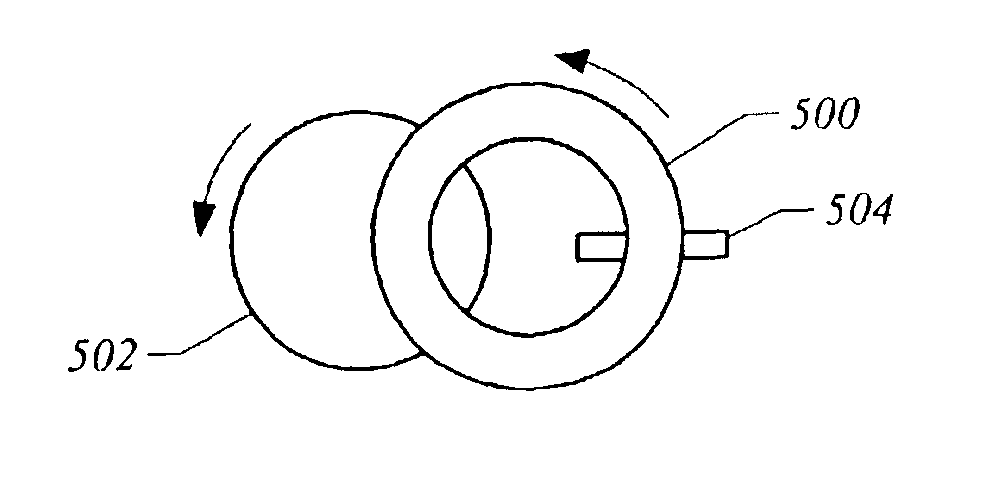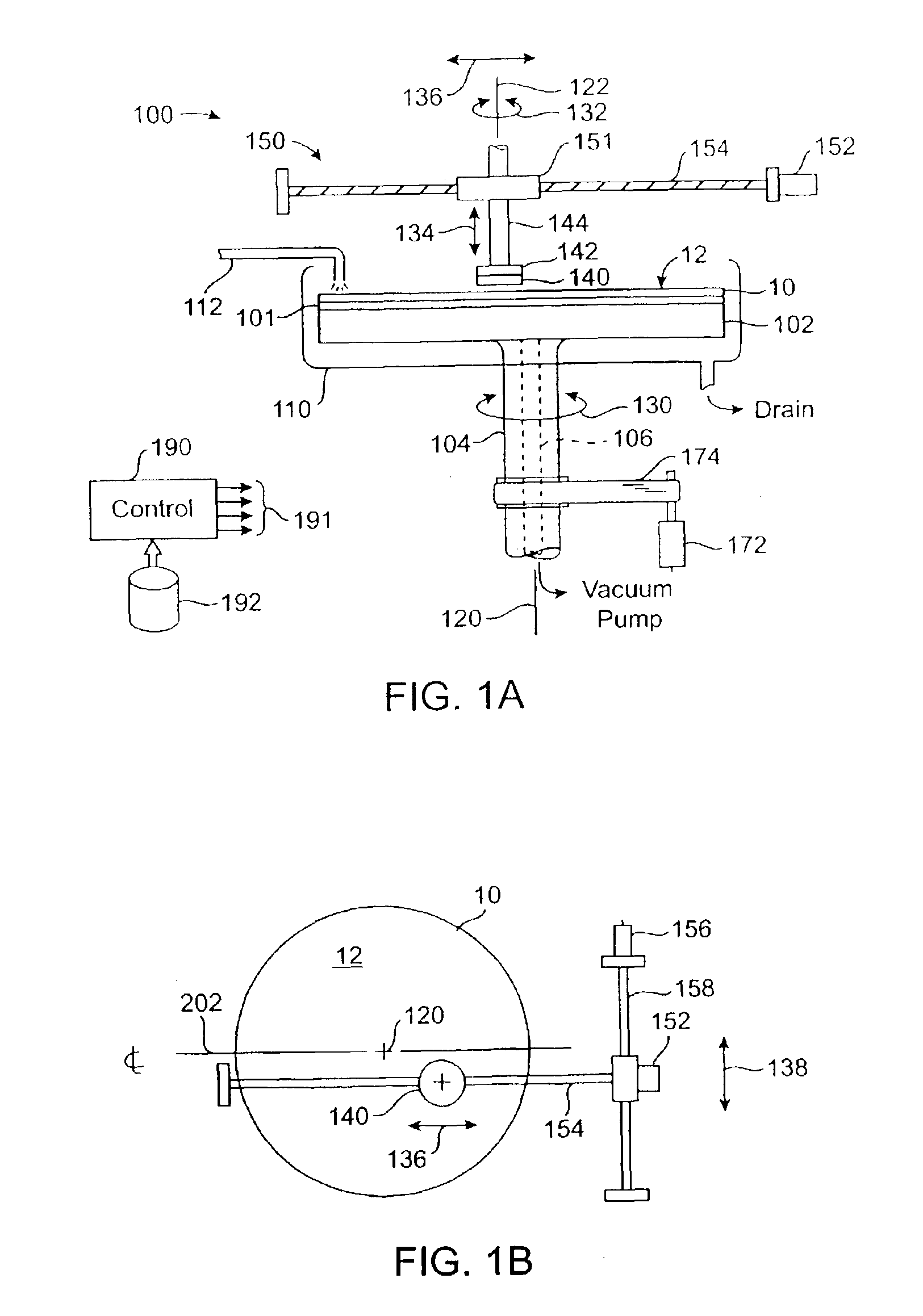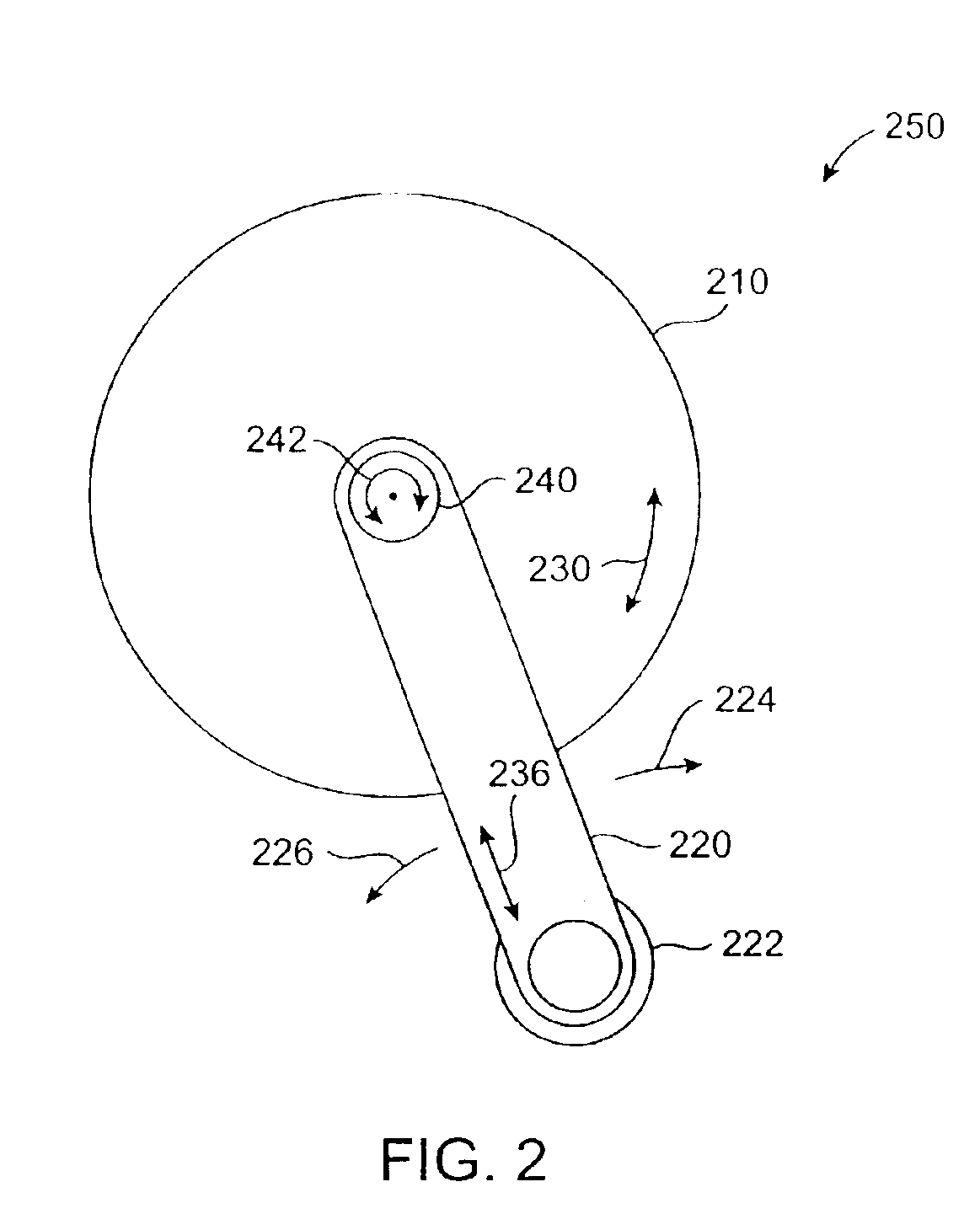Subaperture chemical mechanical planarization with polishing pad conditioning
- Summary
- Abstract
- Description
- Claims
- Application Information
AI Technical Summary
Benefits of technology
Problems solved by technology
Method used
Image
Examples
Embodiment Construction
[0029]According to specific embodiments of the present invention, a technique including a device for chemical mechanical planarization of objects is provided. In an exemplary embodiment, the invention provides a polishing pad, which is mounted on a cap. The cap is rotatably coupled to a drive head of a polishing apparatus. The apparatus includes a smaller polishing pad, relative to the size of the object being polished.
[0030]Referring to FIG. 1A, a chemical-mechanical planarization apparatus 100 includes a chuck 102 for holding a wafer 10 in position during a polishing operation. The apparatus shown is merely an example and has been simplified to facilitate a discussion of the salient aspects of the invention. As such, the figure should not unduly limit the scope of the claims herein. One of ordinary skill in the art would recognize many other variations, alternatives, and modifications.
[0031]The chuck includes a drive spindle 104 which is coupled to a motor 172 via a drive belt 174...
PUM
| Property | Measurement | Unit |
|---|---|---|
| Diameter | aaaaa | aaaaa |
| Area | aaaaa | aaaaa |
Abstract
Description
Claims
Application Information
 Login to view more
Login to view more - R&D Engineer
- R&D Manager
- IP Professional
- Industry Leading Data Capabilities
- Powerful AI technology
- Patent DNA Extraction
Browse by: Latest US Patents, China's latest patents, Technical Efficacy Thesaurus, Application Domain, Technology Topic.
© 2024 PatSnap. All rights reserved.Legal|Privacy policy|Modern Slavery Act Transparency Statement|Sitemap



